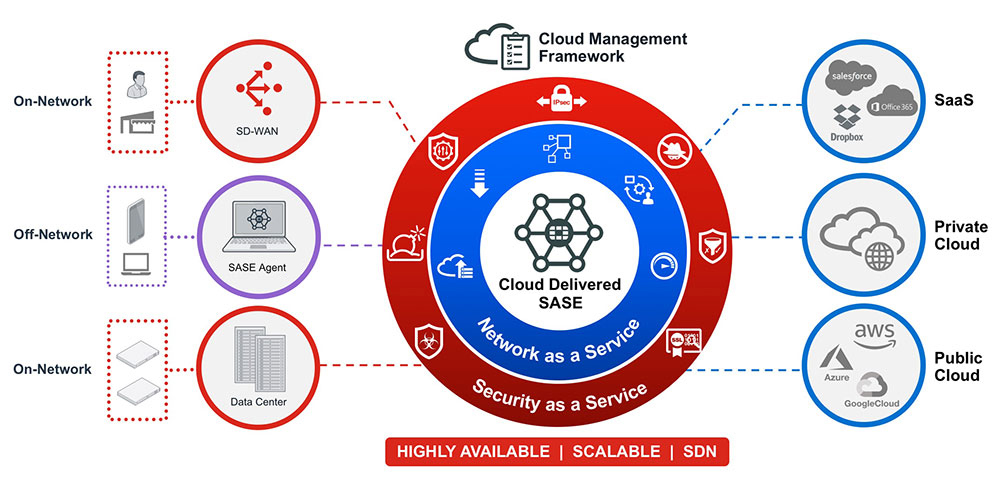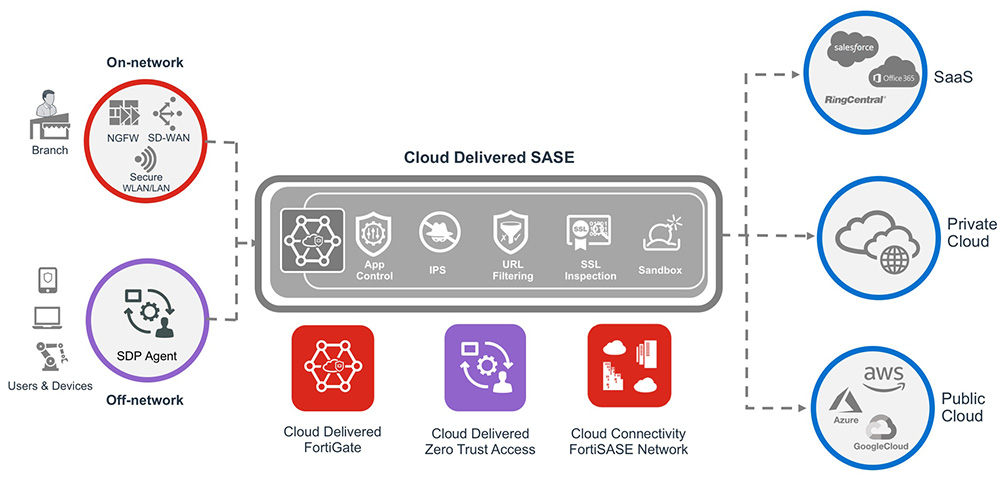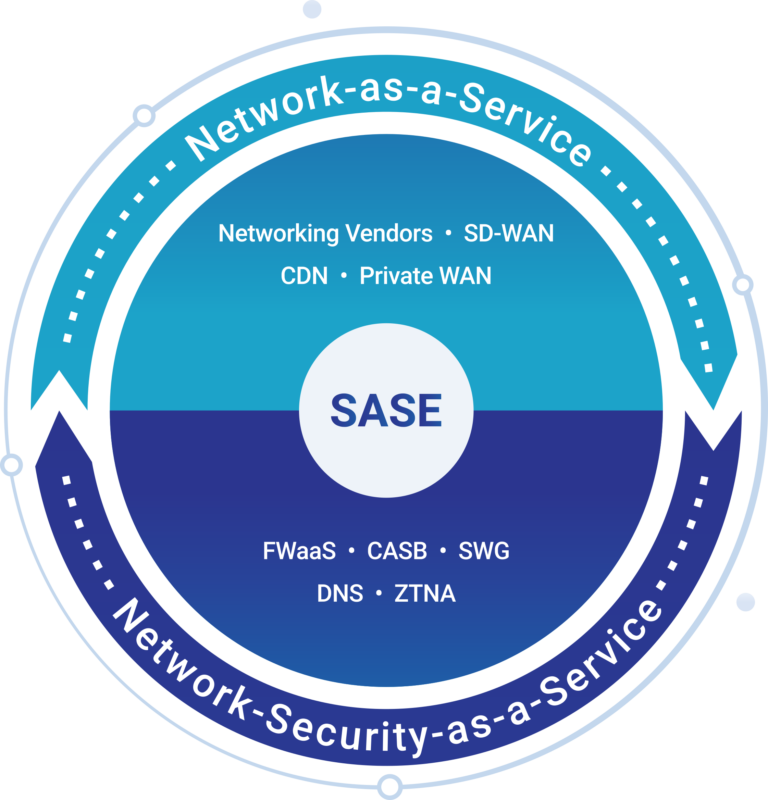Delivering the Most Flexible SASE Solution.
SASE is the future of security and networking.model that combines an array of security capabilities including WAN, firewalls, secure gateways, and zero-trust network access.

Secure Access Service Edge (SASE) is an emerging enterprise strategy that combines network and security functions with WAN capabilities to support the dynamic, secure access needs of today’s organizations. Conceptually, SASE converges SD-WAN and network security services—including next-generation firewall (NGFW), secure web gateway (SWG), Zero-trust network access (ZTNA), and cloud access security brokers (CASB)—into a single service model.
Today’s organizations require immediate, uninterrupted access to network and cloud-based resources and data, including business-critical applications, no matter where their users are located. The challenge is that many of the problems resulting from digital innovation efforts—such as dynamically changing network configurations and the rapid expansion of the attack surface—mean that traditional security solutions no longer provide the level of speed, performance, security, and access control that organizations and users require. Therefore, the SASE concept is a logical evolution of needs and tech trends that have been converging in IT and security for years now.
The term SASE (pronounced “sassy”) was first described by Gartner in an August 2019 report called “The Future of Network Security in the Cloud.” Gartner notes that in the SASE market trend report, “Customer demands for simplicity, scalability, flexibility, low latency and pervasive security force convergence of the WAN edge and network security markets”.
SASE is all about secure access. In addition to connectivity, every SASE strategy must include a core set of essential security elements, including the following.

When properly implemented, a SASE approach allows organizations to apply secure access no matter where their users, workloads, devices, or applications are located. This becomes a critically important advantage as more users join a remote workforce, SaaS applications see rapid adoption, and data moves rapidly among data centers, branch offices, and hybrid- and multi-cloud environments.
